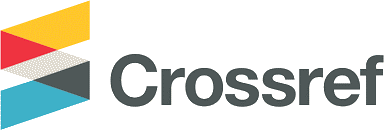Journal of Materials Exploration and Findings
Abstract
Component failures in oil and gas pipelines can have fatal consequences, leading to operational downtimes and environmental damage. Knowledge of the corrosion growth rate is fundamental to pipeline integrity management, as it is essential for risk assessment and decisions related to asset management. This article aimed to compare two approaches for the corrosion growth estimation of the 24-inch offshore gas pipeline: the conventional method versus the Statistically Active Corrosion (SAC) method. This article is based on the in-line inspection (ILI) results of two consecutive assessments from 2020 to 2023 of the entire 73 km of the pipeline. The results show that the SAC method evaluates the corrosion activity on the pipeline with better accuracy and localization than the conventional method, highlighting 782 corrosion active joints in the 5,987 pipeline joints. The SAC method leads to much higher average and maximum corrosion growth rates while also being able to pinpoint active corrosion locations more accurately. Thus, the SAC method is an efficient and simple strategy to cope with corrosion assessment problems regarding pipeline integrity management. It enables the operators to prioritize their maintenance actions, improving pipeline safety.
References
Allen, M H E 2017, ‘Determining Pipeline Corrosion Growth Rates,’ Inspection Journal.
API RP 581 2016, Risk-Based Inspection Methodology. American Petroleum Institute.
ASME B31.8S 2018, Managing System Integrity of Gas Pipelines. American Society of Mechanical Engineers.
Caleyo, F, Velázquez, J C, Valor, A & Hallen, J M 2009, ‘Probability Distribution of Pitting Corrosion Depth and Rate in Underground Pipelines: A Monte Carlo Study,’ Corrosion Science, 51(9), pp.1925-1934.
Chattopadhyay, S 2018, ‘Corrosion Failures of Pipelines,’ In Corrosion Science and Engineering, pp.621-657, Springer: Singapore.
DNV GL 2018, Risk-Based Asset Integrity Management, DNV GL.
El-Abbasy, M S, Senouci, A, Zayed, T, Mirahadi, F & Parvizsedghy, L 2014, ‘Artificial Neural Network Models for Predicting Condition of Offshore Oil and Gas Pipelines,’ Automation in Construction, 45, pp.50-65.
ESDM Minister Rule No. 32 2021, Pipelines Integrity Management System, Ministry of Energy and Mineral Resources, Republic of Indonesia.
Hadi, A.F., et al. 2021, ‘Application of Risk-Based Inspection for Offshore Pipelines in Indonesia: A Case Study,’ IOP Conference Series: Materials Science and Engineering, 1096(1), p.012025.
Laycock, P J, Orsini, D & Schemmel, P 2018, ‘Corrosion Growth Rate Assessment of Pipelines Using Repeated in-Line Inspection Data,’ Proceedings of the 2018 12th International Pipeline Conference. Volume 2: Pipeline Safety Management Systems; Project Management, Design, Construction, and Environmental Issues; Strain Based Design; Risk and Reliability; Northern Offshore and Production Pipelines, Calgary, Alberta, Canada. September 24–28, 2018.
Maes, M A, Faber, M H & Dann, M R 2009, ‘Hierarchical Modeling of Pipeline Defect Growth Subject to ILI Uncertainty,’ Proceedings of the ASME 2009 28th International Conference on Ocean, Offshore and Arctic Engineering, Volume 2: Structures, Safety and Reliability. Honolulu, Hawaii, USA. May 31–June 5, 2009. pp.375-384.
Muhlbauer, W K 2004, Pipeline Risk Management Manual: Ideas, Techniques, and Resources, Gulf Professional Publishing.
Muhlbauer, W K 2015, Pipeline Risk Assessment: The Definitive Approach and Its Role in Risk Management, Expert Publishing.
Nessim, M, Dawson, J, Mora, R & Hassanein, S 2008, ‘Obtaining Corrosion Growth Rates from Repeat in-Line Inspection Runs and Dealing with the Measurement Uncertainties,’ 7th International Pipeline Conference, Volume 2. Calgary, Alberta, Canada. September 29–October 3, 2008. pp.593-600.
Vanaei, H R, Eslami, A & Egbewande, A 2017, ‘A Review on Pipeline Corrosion, in-Line Inspection (ILI), and Corrosion Growth Rate Models,’ International Journal of Pressure Vessels and Piping, 149, pp.43-54.
Recommended Citation
Rinaldi, Rudi and Fatriansyah, Jaka Fajar
(2024)
"A Comparative Study of Conventional and Statistically Active Corrosion Methods for Corrosion Growth Assessment of a 24-inch Gas Pipeline,"
Journal of Materials Exploration and Findings: Vol. 3:
Iss.
3, Article 5.
DOI: 10.7454/jmef.v3i3.1074
Available at:
https://scholarhub.ui.ac.id/jmef/vol3/iss3/5
Included in
Computational Engineering Commons, Materials Science and Engineering Commons, Mechanical Engineering Commons, Mining Engineering Commons, Other Engineering Commons, Risk Analysis Commons, Statistical, Nonlinear, and Soft Matter Physics Commons










